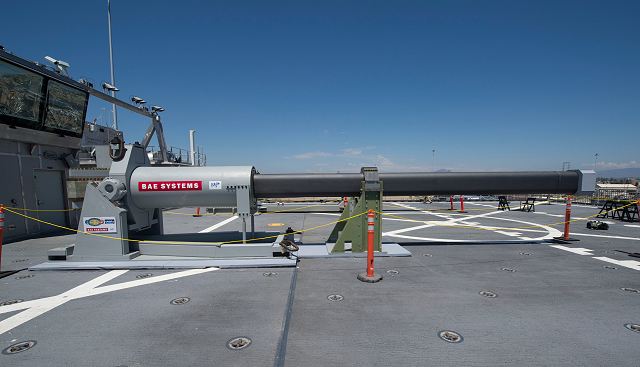BAE Systems thinks about the possibility to put electromagnetic railgun on armoured vehicle 2811144
| a | |||
Military Defense Industry Technology - Railgun for armored vehicle |
|||
| Friday, October 28, 2014 10:10 AM | |||
| BAE Systems thinks about the possibility to put electromagnetic railgun on armoured vehicle. | |||
BAE
Systems has been refining the electromagnetic railgun that it’s
been developing for the U.S. Navy. Deployment of a prototype system is
scheduled for 2016, but BAE is already looking forward to what might be
possible as the technology scales up in power and scales down in size.
The first target might be a railgun for the Army’s next-generation
Future Fighting Vehicle. |
|||
 BAE Systems electromagnetic railgun |
|||
| |
|||
| This
fascinating technology, which uses high-power electromagnetic energy instead
of explosive chemical propellants to launch projectiles farther and faster
than any previous system, is currently in Phase 2 of the program. During
this phase, we will advance the railgun by maturing the launcher and pulsed
power from a single shot operation to a multi-shot capability. Auto-loading
and thermal management systems will also be incorporated. |
|||


























